FAQs
All Your Questions Answered
LiceCombing.com attempts to answer FAQ’s based on available published science combined with our practical experience gained while in the lice removal business. As with any subject, contradictory reports and opinions may exist. Answers are subject to revision as new information is discovered or published. Please note, however, the following information is for educational purposes only. As always, discuss the following information with your medical health care expert before implementing.
Can I get rid of head lice and nits without a pesticide?
Yes. Head Lice combing is the safe, non-toxic, and natural way of getting rid of head lice and their eggs/nits. We also encourage routine screening and regular head lice combing for early detection. Head lice combing is practical and cost-effective. Read the non-profit HeadLice.org (also known as the National Pediculosis Association) editorial: New Studies Validate Old Wisdom

Is head lice combing hard?
No. It’s just a comb. But it is a specifically spaced metal comb. There is a short learning curve and a time commitment, but there is a time commitment no matter what method is chosen. Other avenues may seem like a shortcut, but how will you know all the head lice and their nits are dead? You still need to comb to remove head lice dead or alive so why not just start head lice combing right away! There are no shortcuts, AND you can learn to head lice comb at home.
We encourage regular head lice combing which serves as early detection and screening with the added benefit of removing head lice and their nits immediately. Routine head lice combing reinforces proactive behavior instead of being reactive.
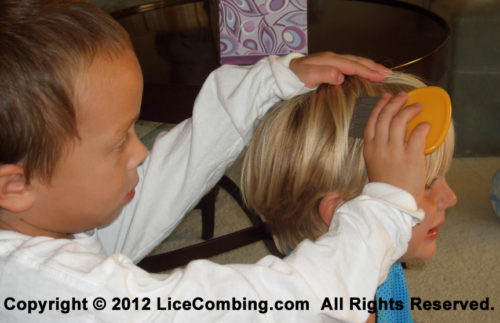
Do only kids get head lice?
No. Head lice are equal opportunists. Since head lice crawl from head-to-head, there is a higher prevalence with children who often spend times with their heads together. Head-to-head contact seems to lessen as we grow olde; thus it may account for less prevalence in adults. Still, anyone young or old can and do get head lice.
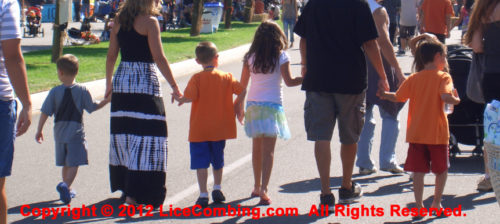
Do only dirty people get head lice?
No. Anyone can get head lice regardless of hygiene. Body lice and head lice are often mixed-up. Body lice need dirty/unwashed conditions while head lice do not. See The Science page. Dirty or clean hair does not matter to head lice. Hair, a food source (human blood), and a perfect temperature, are all a louse needs to survive.
Do only poor people get head lice?
No. Head lice are equal opportunists. Higher prevalence in certain neighborhoods may depend on access to properly spaced metal lice combs as well as access to medical advice and education. There are anecdotal head lice cases (as recounted on national talk shows) which happen to well-known celebrities as well as published news report that the children of a country leader have all had head lice.
Can my dog give me head lice?
No. Most animals have their own type of lice. Lice are host specific. Although an animal could be a transitional place for a wayward louse (e.g.. one just happens to crawl on Fluffy then a person lays their head on the animal), human head lice have not been found to “live” on dogs and vice-versa.

Can lice fly?
No. Lice do not have wings. Anecdotal stories may have lice seemingly to “fly” out of the hair, but in fact, the head louse was attached to a single hair strand (difficult to initially see) which came out of the head thus it made it look like the head louse was flying. Head lice are physically incapable of flying on their own. They crawl.
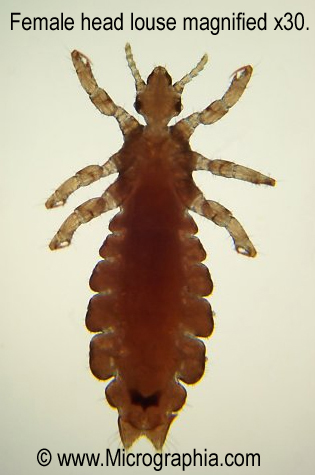
Do head lice like clean hair?
No. Clean or dirty hair does not matter to head lice. Hair, blood meals, and a perfect temperature are all a head louse needs to survive.
When can my child go back to school after having head lice?
Please check with your child’s school policy.
We encourage regular head lice coming at home because any found head lice or their nits would immediately be removed during this routine screening with no school time missed in the process.
If others find head lice or their nits, we believe that no child should miss school when a parent/caregiver has actively had two (2) thorough head lice combing sessions where NO head lice or nits were present on the head lice comb AFTER the end of the second head lice combing session. This represents the best effort anyone could ask for.
For example: If head lice were found on your child, the parent/caregiver should immediately begin the head lice combing process. The very next day, wake up early BEFORE SCHOOL for a quick second head lice comb out. If you find missed head lice or their nits, you MUST do a more detailed head lice combing. If a few head lice or their nits come out, don’t panic. You missed a few so spend a little more time carefully head lice combing sections until nothing comes out again. Leaving head lice or their nits behind risk the chance of continued reproduction and/or hatching of new head lice. If no head lice or nits come out in the morning, congratulations you did a great job! Repeated head lice combing is a win-win. After a found infestation, head lice combing every day (5-10 mins or longer if more are found) for 14 days will break the life-cycle of head lice and keep you on top of the situation. Again, this represents your best effort.
Read the non-profit HeadLice.org (also known as the National Pediculosis Association) Comb First! Campaign.
Are dry hair checks efficient at finding head lice?
Yes and No.
Yes, head lice can and have been spotted by trained individuals who use dry checks as part of routine screenings.
- Although dry checks are an important part of head lice screening and should continue, it is unrealistic to expect health care professionals to take the time to head lice comb every individual thoroughly.
No, we should not depend on dry hair checks ALONE as proof someone does not have head lice because:
- Dry checks can provide a false sense of security if it’s the ONLY screening relied upon. Missing one head louse alone opens up the possibility of a head lice infestation down the road.
- A person can get head lice at any time, even right after a check. The dry check represents one moment in time. Routine home head lice combing covers all the time.
- There is an average of 100,000 hairs on a head, all potential hiding places. It’s extremely difficult to check every hair strand dry in the limited amount of time a professional has or without the use of a head lice comb.
- Head lice are fast crawlers (possibly 9 inches a minute) in dry hair. Checking one side of the head can have a head louse already on the other side of the head.
- Some head lice and especially nits may be hard to see without the use of magnification.
At home routine head lice combing transfers responsibility of early detecting and removing head lice and nits to the parent/caregiver who have daily access to an individual.
Can you prevent head lice?
Debatable. Researchers believe head lice have been around for millions of years, so they are not going anywhere soon. Although you may not be able to prevent head lice, you can minimize an infestation with routine home head lice combing.
Is having head lice considered a disease?
Debatable. The answer depends on who you talk to and is controversial. Current research may be redefining how we all view head lice in the future. In either case, head lice and their nits can be removed with a head lice comb. See The Science page under “Vectors For Disease” or HeadLice.Org reports on critical studies.
Do I need to tell others who have had contact?
Yes. It is our opinion that you should notify others who have had head-to-head contact (or prolong contact) with a person who has head lice. Informing others removes the stigma and shame surrounding having head lice and allows others to head lice comb as well to help stop the potential of passing it on to the next unsuspecting person or right back to your family member.
Can I blame someone for getting head lice?
No. In general, most people don’t know they have head lice when they don’t have any routine head lice combing in place. This is how head lice are easily passed from head-to-head. Head lice have been around for millions of years. Whoever “gave” you head lice also got it from someone, who got it from someone, who got it from someone… There is no blame or shame, only educated head lice combers.
Should my child avoid his friend or another family who had head lice?
No. The operative word is HAD head lice. Teaching children to avoid head-to-head contact is very different than avoiding a person. Avoidance places blame and create a stigma. In our opinion, a child who has been thoroughly head lice combed is significantly less likely to pass on head lice as someone who has never been head lice combed and doesn’t know they have it. Regular head lice combing in your home removes the anxiety of being afraid of going anywhere because you are already proactive.
Can I get head lice from a sofa, car, theater or airplane seat?
Yes, BUT not because it’s a place where head lice “live.” We believe transference of head lice from an inanimate object is rare, although not impossible. With the exception of personal items such as a hair brush, comb, or hat where direct transference can easily happen, the odds are in your favor that you will not get head lice from other inanimate objects. On average, head lice die in two days off a host. Simple vacuuming or using a sticky lint brush roller on these object can remove wayward head lice. See “Can I get head lice from a hair brush?”
Can I get head lice from a hair brush?
Yes. Transference of head lice from a brush, comb, or other wearable personal items can happen. Head lice claws are designed to hold onto the circumference of hair. Most hairbrush bristles or comb teeth may be larger than their claw size and thus hard to hang on to. Lice WILL hold on to loose hair left in the brush or comb. Not sharing personal items will help against preventing this transference.
Are all head lice combs alike?
No. Parents and many professional nitpickers use two proven brands, LiceMeister® and Nit-Free Terminator®. Spacing of the non-bendable metal teeth are important. It needs to be small enough to pull out nits and lice, but just wide enough to let a single strand of hair slide through. Based on our experience, the LiceMeister® comb is great for home use due to the rounded corners where the plastic handle meets the metal teeth. Additionally, funds from the sale of the LiceMeister® go to a non-profit called the National Pediculosis Association. An organization dedicated to protecting children and their environment from the misuse and abuse of prescription and over-the-counter pesticide treatments for lice and scabies. Whichever you prefer, both are used by professionals too and have proven to work well.
Can I call a professional nitpicker service to head lice comb?
Yes. Professional nitpickers provide a service of head lice combing for you. Service prices vary greatly (generally between $75 – $250 an hour) and length of service is dependent on several factors such as the amount of infestation and the length and condition of hair.
Although you can have a service initially head lice comb for you, learning to head lice comb is the most cost-effective way. It encourages routine and regular self-screening and early detection.
Please note: We are unaware of any industry standards or government health licensing requirements for the home head lice removal business in the U.S. Skill can vary depending on the individual and/or company training. When picking a company, ask for a senior technician and inquire into how tools are cleaned between clients. See cleaning suggestions under “Will the hair salon’s Barbicide® kill lice?”
Can I clean my child's stuffed animals or blankie?
Yes. Depending on the item, a clothes dryer, vacuuming, or a sticky lint brush roller will be sufficient to remove wayward head lice and nits on these items. It is our opinion that no favorite toy/blankie be taken away from a child. Placing such items in a bag for any length of time may be seen as a punishment; especially in light of the science now known and simple cleaning techniques readily available.
Can lice be repelled?
Debatable. We are unable to find independent published studies on the topic. Nature has given head lice the ability to be around for millions of years. Although head lice may not be preventable, infestations can be kept to a minimal with regular head lice and nit combing.
Will my clothes dryer kill head lice and nits?
Yes, if done properly. Researchers found that an average of 130 degrees for 5 minutes kills lice and their nits. Thus, putting fabric in a clothes dryer on a high heat setting for 20 minutes will kill head lice and their nits. The 20-minute number is arbitrary due to the fact that every make and model of clothes dryers differ with no industry standard for internal temperatures. Please see: “Will my hairdryer or flat iron kill head lice?”
Will the hair salon's Barbicide® kill head lice?
Probably not. We have not located any independent research on the topic. In a salon setting, Barbicide® is meant to kill bacteria, viruses, and fungi, not head lice. Make sure all brushes or combs are free of ALL hair before being used on you. We suspect the loose hair in the brush, not the brush bristles, are what head lice cling to.
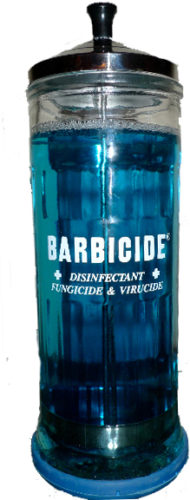
Note: Professional home nitpickers are not required by any governing agency to following strict cleaning policies. Informed professional removal services (who reuse tools on multiple clients) always wear clean gloves during each removal and follow exact cleaning guidelines afterward. Disinfecting lice combs in 130+ degree water for five minutes (see The Science page), cleaning between the comb teeth with unwaxed dental floss, cleaning with soap and water, THEN submerging dry tools (metal lice combs, plastic combs, hair clips etc.) in Barbicide® for 10 minutes in between all clients would be optimal. The water temperature for killing head lice may not be adequate for killing bacteria, viruses and fungi (as hair salons are required to do by law with the use of Barbicide®) between clients.
CAUTION: Many state laws prohibit a hair salon employee from working on a client with head lice. Check with your local government agency for more information.
Can lice live on eyelashes?
Yes. Although we have not come across this in our practice, nurses and social workers have confirmed that this indeed does happen in large infestation cases. It is essential to seek immediate professional medical help if this is a concern.
Will brushing my hair vigorously kill head lice?
Probably not. Although we are unable to locate any independent research on this topic, we have to remind you that lice have been around an estimated 5.6 million years. If hair brushing killed, we would not have the problem we have today.
Will my hair dryer or flat iron kill head lice?
No. Head lice are more often than not on the scalp where they are at the right temperature and have a meal (human blood). Eggs/nits are also closest to the scalp as well. Consumer hair dryers and flat irons will not work and should not be used to treat head lice/nit infestations.
Can I use a head lice comb if I'm pregnant?
Generally yes. However, before doing so, consult with your health care expert.
Can I head lice comb my small child/baby?
Generally yes. However, before doing so, consult with your health care expert.
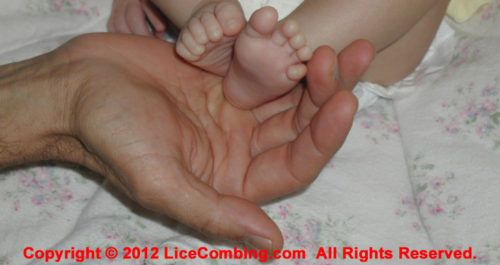
Can I head lice comb myself?
Generally yes. However, before doing so, consult with your health care expert. Please see our Videos page.
Will hair dye kill head lice?
No. We are unable to find any independent studies published on this topic. Anecdotal client reports have several people stating that they dyed their hair, yet live head lice and their nits were still present afterward. Additionally, we had clients report that they had specifically gone to a salon (knowing they had lice) in hopes the hair dye would kill. It did not.
Do I need to clean my child's classroom after head lice?
Probably not. Head lice need humans to “live.” A classroom or other inanimate objects can be transitional places, but the odds of catching head lice are less likely unless the timing is just right. Head-to-head contact is still the primary way to get head lice. Additionally, head lice die in an average of 2 days off a human; thus classrooms are generally “self-cleaning” for head lice over a weekend. Not only will the classroom not likely to be the right temperature for them to survive, but they will not have a meal source (blood).
Can I wash head lice out of my hair?
No. No matter how many times you wash your hair with water and regular shampoo, you may not remove all head lice and probably not the nits which are “cemented” in by a female louse. Nature has given head lice the ability to survive for millions of years. Leaving one head louse or nit behind risks the chance of continued reproduction and/or hatching of new head lice. Learn to head lice comb at home.
Will head lice drown when I shower?
No. Research done on hippopotamus lice found that their lice could survive prolonged periods underwater. Research is extrapolated for humans. Anecdotal reports from clients who were avid swimmers still found they had head lice after multiple extensive swimming sessions. Nature has given head lice the ability to be around for millions of years. Use a head lice comb to comb out head lice and their nits.
Are head lice the same as scabies?
No. Head lice live on the surface of your skin. Scabies are mites that burrow under the skin. Please check with your medical professional if you have concerns about scabies.
Do I need to wear my hair up?
No, but the theory is less swing provides less opportunity for lice to crawl onto hair. Some studies state length of hair does not matter. If wearing your hair up makes you feel better, go ahead. We have not been able to find an independent published study that confirms this theory. We suspect getting head lice has less to do with hair length and more to do with head-to-head contact and timing. If you are regularly head lice combing at home, hairstyle and length will not be a concern.
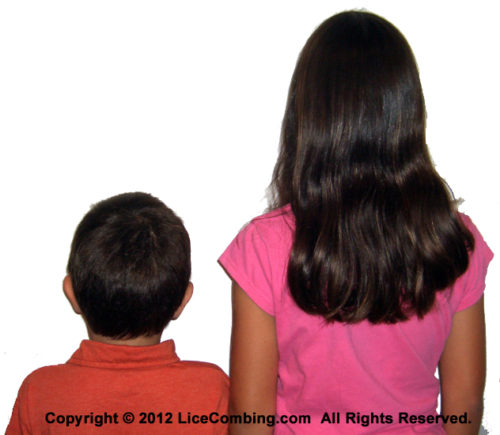
Should I shave my child's head?
No. Although it may be a personal choice for some, it’s not a requirement, especially in light of the science we now have about head lice. This old wives’ tale/remedy of shaving one’s head as the only alternative to pesticide treatments was put to rest when the metal head lice comb was invented and used effectively. Although bald people do not get head lice, this does not mean parents need or are required to shave their child’s head. Please remember that hair will grow back and the child could face the possibility of getting head lice then. Additionally, shaving a child’s head may be seen as a punishment for getting head lice. We emphasis no shame and no blame in getting head lice to removes stigma and encourage individuals to head lice comb to remove head lice and their nits.
We do recommend trimming longer hair to make the head lice combing process easier but ONLY if it is not seen as a punishment to a child.
Do African Americans get head lice?
Yes. Although we are unable to find independent published studies regarding this prevalence, we have had several African American clients who have had head lice. A Nigerian parasite journal talks about the prevalence of head lice in Nigeria. Some published statements say African and American head lice have adapted their claws to the hair shape/types (oval, elliptical, circular) of their particular location. If this is true, we do not know what will happen in the future as head lice are continually transported head-to-head around the globe. All households should own a metal head lice comb and practice routine head lice combing.
Are head lice seasonal?
No. Head lice have been around for millions of years. They don’t hibernate but go from head-to-head year-round. It may be likely that multiple head lice reports increase after school breaks due to alert school nurse or teacher. Head lice combing should happen year-round. All households should own a metal head lice comb.
Will head lice die if I sit in the sun?
No. No matter how hot the top of your head may feel in the sun, the human body sweats to keeps external skin temperatures cool. A scalp is a perfect place for head lice to stay in constant liveable temperatures and why they have been around for a very long time.
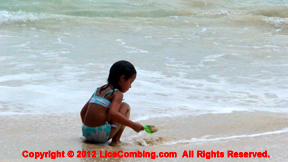
Should my child go on a sleepover?
Depends on the circumstances. Never send a child on a sleepover if you know they currently have lice. Learn to lice comb at home. If, in general, you are concerned about your child getting lice at a sleepover, you should already have a lice combing routine in place in your household. Routine lice combing before your child attends the sleepover, and then when your child returns is the key to early detection. Regular head lice combing prevents your child from giving head lice to another unknowingly at a sleepover. Additionally, regular lice combing has the added benefit of removing any head lice or nits, if any, when your child returns from the sleepover. Removing head lice early, before it spreads to others, is the name of the game. Learn to head lice comb at home.
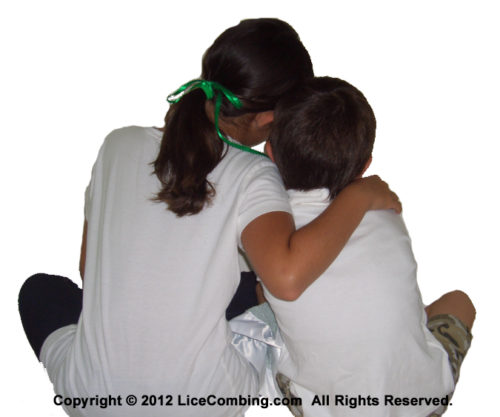
Can nits or eggs re-stick to my hair or other items?
No. The science on the nit “glue” shows this substance is only sticky at the time when the head louse mother lays her egg and uses the glue to attach the egg to the hair strand. Once dried, the glue hardens like cement to keep the egg attached. Once an egg/nit is pulled out of the hair, it can’t reattach itself to something else. Wayward nits may be lint brush rolled or vacuumed up easily.
Do people in cold or hot states get head lice?
Yes. Colder states like Alaska and warmer states like Hawaii (where head lice are called “uku”) all report having head lice. No matter how cold or hot it gets outside, an individual’s body will try to regulate internal and external skin temperature under normal circumstances. Learn to regularly head lice comb at home.
Do head lice take on the color of your hair?
No. We have not been able to find independent scientific studies to confirm this statement. Based on our fieldwork, it is our belief lice color differences has to do with the age of a louse. Newly hatched head lice are almost clear or transparent in color (and nearly invisible in blonde hair). As the louse ages, they take more blood meals (their only food source), and the blood turns a darker color in their initially transparent body. The older the head louse, the darker the head louse.
Are there benefits of routine home head lice combing?
YES! Early detection and screening lesson the panic and possibility of the whole family getting head lice. These benefits can’t be overstated. Establish a regular home lice combing routine.
Do people with dreadlocks get lice?
Yes. It is a myth that people with dreadlocks don’t get head lice. Head lice are very tiny and can crawl in anyone’s head no matter the hairstyle. Additionally, we are unable to find independently published reports on the prevalence of people with dreadlocks being more susceptible than others to getting head lice. Head lice are equal opportunists. Hair, human blood, and a perfect temperature is all a head louse needs to survive. A head lice comb, the non-toxic and safe solution, can be used once the dreads have been unwoven and brushed out. We encourage the focus to remain on the health of individuals.
Can hair detangler or just water be used in place of the hair conditioner mix?
Yes. Conditioner, like hair detangler, is an aid to make the process more comfortable because it helps ease the head lice comb through the hair but is NOT the reason the head lice comb works. The head lice comb is a stand-alone product. Depending on the sensitivity of the individual being lice combed, a head lice comb can be used on wet or dry hair alone without the use of conditioner or detangler. Conditioner and detanglers that have a slippery consistency when mixed with water worked best for us and is our preferred method.
Does everyone need to be head lice combed in the house?
Yes. Once someone has head lice, EVERYONE in the household (including babysitters) should be checked or you risk passing it back and forth. The benefits of routine head lice combing allow for head lice and nit removal immediately upon being found so there is no transference to others.
Do all the nits need to be removed?
YES! It is challenging to tell a live viable head lice nits/eggs from a dead one without the use of a strong magnifying glass or microscope. Leaving one head louse or nit behind risks the chance of continued reproduction and/or hatching of new head lice. Regular home lice combing is a way to screen, detect and remove head lice and their nits immediately
Do I need to remove my child's hair feather accessory to head lice comb?
Yes. We recommend you use the head lice comb on every part of the hair, including the small section where the hair feather accessory is attached. Leaving one head louse or nit behind risks the chance of continued reproduction and/or hatching of new head lice
Do I have to clean my house for 14 days after a lice infestation as well?
Yes and No. Initial cleaning is recommended to remove wayward head lice and their nits. If you find live adult head lice (which are the ones that can transfer to others) we recommend another simple cleaning. Simple cleaning involves vacuuming or lint brush rolling, or fabric placed in a clothes dryer on a high heat setting. Nits can’t transfer unless they hatch. The longer they are away from the head, the less viable (but is still dependent on their hatching stage). In the absence of finding a louse, heat dying pillowcases daily (where a head lays for longer periods) seems to lessen people’s anxiety over the issue of cleaning. We recommend individuals save their energy for head lice combing rather than burn out on cleaning
Does the lice comb really work?
Yes. Although it would be impossible to speculate why some people report the failure of lice combing, we would ask if the following general guidelines were followed for the comb to be effective:
- Use a non-bendable, properly spaced, metal head lice comb.
- Start the lice comb teeth at the scalp (be under lice and nits) and dragged through the hair to the end of the hair length. Starting the comb further away from the scalp and above the normal placement of head lice and nits will leave lice and nits behind.
- Wipe the lice comb on a clean paper towel after every pass through the hair so nothing is inadvertently put back in the hair,
- The lice comb need to pass through every hair on the head (from scalp to hair end). Each hair strand is a potential hiding place.
- Lice combing should be continued for 14 days after an infestation. Follow-up head lice combing checks your work and catch any NEW infestations should they occur.
We have not heard of the head lice comb not working when these guidelines were followed. As always, we encourage a routine head lice combing schedule to be in place even when head lice are not suspected.
Do other head lice remedies work?
We are not qualified to answer about other specific head lice treatments or the myriad of unscientific home remedies out there. We will say that nature has made it possible for head lice to survive for millions of years. We encourage safe and natural home head lice combing which removes head lice and nits from the hair.
Congressman Edward J. Markey’s letter to FDA: Stop Use of Toxic Chemical in Children’s Shampoo
Should a head lice infestation be left untreated?
No. Left untreated head lice reproduce quickly. Females have the potential to lay multiple eggs daily during their lifetime. Those eggs hatch and grow to adults who reproduce and continue the cycle. The longer a head lice infestation is left, the more amount of work will be put in to remove them. We encourage a routine head lice combing schedule for early detection and removal as a way of focusing on the overall health of an individual
Do we have to head lice comb every day after an infestation?
Yes. Head lice combing every day removes initially missed adult lice and nits and breaks the life-cycle of lice to stop an infestation. We encourage daily combing instead of “every few days” because any missed nits can hatch at any moment in time. Once mobile, a head louse starts to feed on human blood and has the capability of transferring to others. There is no way to know when a nit was laid and when it will be hatching. Daily head lice combing will remove missed nits and detect and remove any newly caught head lice in the future.
Can I catch head lice just from checking my child?
No. Head-to-head contact is the number one way head lice are passed from person to person. Checking or head lice combing someone will not give you head lice. Observe precautions such as not using the same head lice comb without cleaning it, keeping your hair from mingling with another’s, and refrain from touching your hair until your hands are washed. It is important to remember that head lice don’t fly or jump, they crawl. The follow-up to that question is usually, “Have you ever gotten head lice from a client when you did removals?” The answer is no. We have dealt with hundreds of clients and have never once gotten head lice from a client.
Will routine head lice combing add extra stress to my already stressful life?
No, it doesn’t have to. This is best illustrated by a 5-year-old client who had just gotten head lice and nits combed out of her hair. We were explaining to her unconvinced parent the benefits of regular head lice combing when the 5-year-old spoke up and said, “Mom, it’s just a comb. It’s not hard to do. And I don’t want bugs in my hair.
